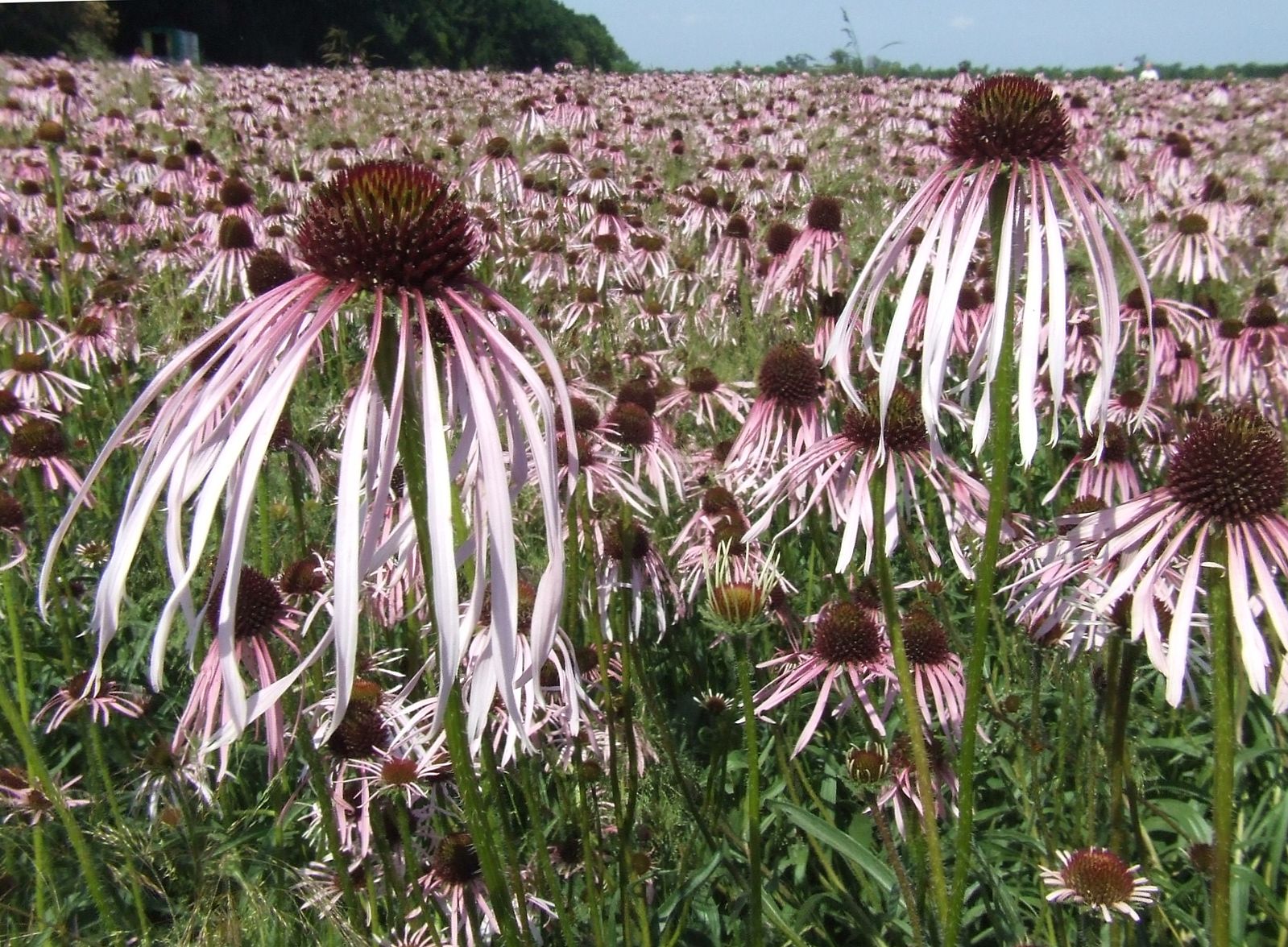Echinacea pallida seeds – Pale Purple Coneflower Seeds
Echinacea pallida seeds or Pale Purple Coneflower is a light pink native wildflower, that is at home in the garden or meadow, and known as one of the top ten native pollinator plants to grow from seed at home.
Echinacea pallida seeds, or Pale Purple Coneflower, is a fast-growing perennial that tolerates dry conditions and full sun, enjoying a little shade in height of Summer, like Rudbeckia, prefers a free-draining, annually leaf-mulched soil.
Echinacea pallida seeds iat home in garden borders, meadows for prairie plains, with ten species there are coneflowers for every space, including compact plants for containers and tall herbaceous perennials for the back of the border.
Lightly scented, everlasting coneflowers start in early Summer are continue through Fall, the central cone is spiny and lasts for many months as dried seed-heads proving seeds for birds and wildlife.
Long season flowering single flowers appear on multi-branched stems in early-Summer, creating a carpet of large daisy flowers when planted on mass, a sea of pale pink blooms.
Flowering Summer to Fall and popular with an array of pollinators, particularly butterflies and bees, and plentiful seed for fall birds.
Harvested from my own pollinator-friendly plants these thin petalled daises make a cheerful addition to any butterfly or wildflower garden.
Thriving on poor soils in full sun, on the prairie, or at home in the cottage garden, plant with bee balm, goldenrod, and asters.
Seed Count: Echinacea pallida seeds
Average of 25+ Pale Purple Coneflower seeds per pack, shipped tracked for your convenience spend $20 or more in one transaction and get free shipping.
Cold Stratification or Direct Sowing: Recommended. (See Winter Jug Method ) Echinacea pallida seeds
Direct sow seeds in fall and allow seeds to naturally cold stratify. When starting seeds indoors, sow finely and barely cover seeds with soil. I recommend sowing these seeds, direct in Fall on a prepared seedbed or garden container, water well, and protect from winter weather with a fabric fleece if some seeds germinate early. Also known as cold stratification and can be completed anytime of the year by placing seed packs in a cool drawer of a refrigerator for 4-12 weeks to break seed dormancy.
1) Sow direct in a prepared weed-free seedbed
2) Cold frame sheltered location in small pots outdoors
3) Under lights indoor grow room
4) Bright windowsill with drip tray and propagator cover
I like to grow in pots this way you can break dormancy, simply by moving the pots around and most seeds germinate in batches, care must be taken when picking out to avoid disturbing emerging seedlings.
Pot young plants on until large enough to plant out, this native plant mix prefers poor soil in full sun.
Full instructions, border design and planting ideas available online by searching igrowhort native-seed-collections.
Native plants maintain balance and provide habitat and eco-systems for resident and migratory wildlife. Due to many years of ecological destruction, development and toxic pollution many native wild flowers, and wildlife are under-threat of extinction.
We all have an important role to play, no matter how small your garden or balcony a few plant pots filled with natives instead of alien ornamentals of genetic hybrids that offer very little to no benefit to feeding insects and birds.
Time to make a small difference on a global scale and encourage our neighbors friends and families to sow a patchwork quilt of native wildflowers like a blanket to protect our sacred planet!






Reviews
There are no reviews yet.